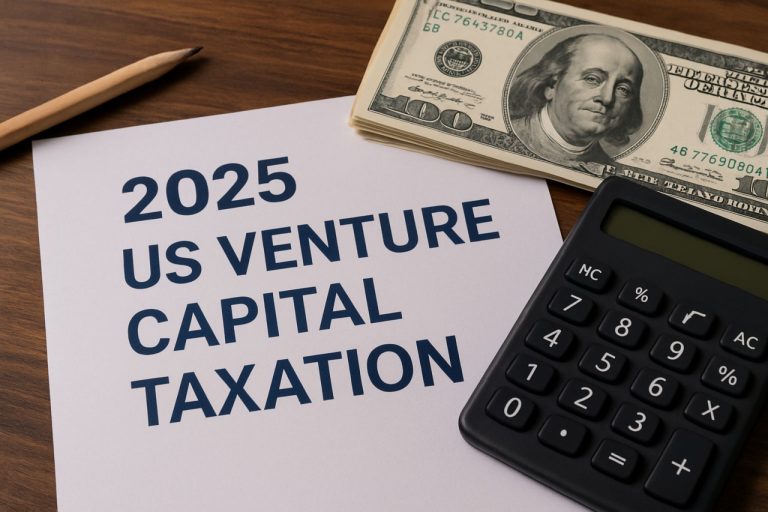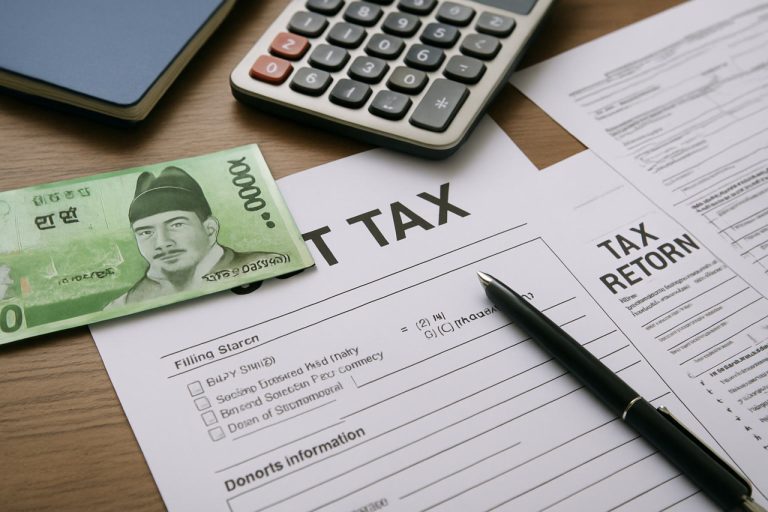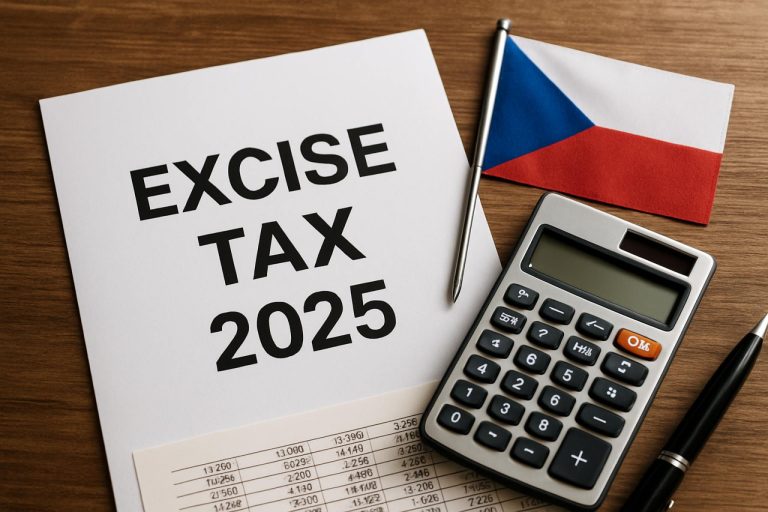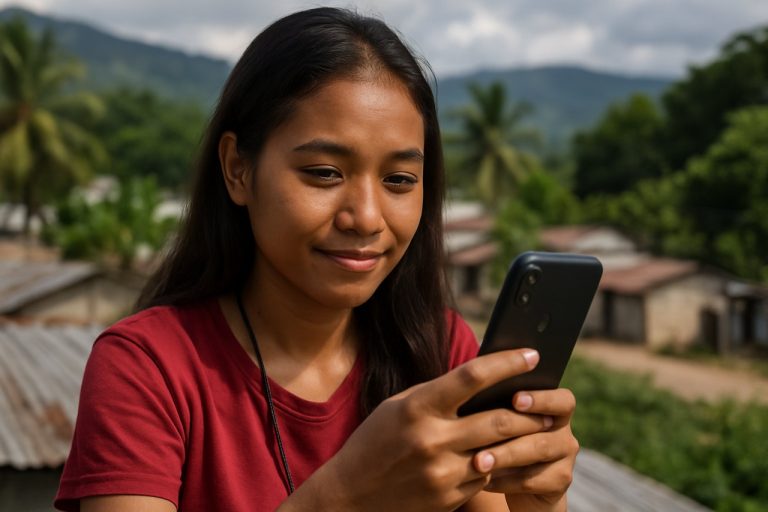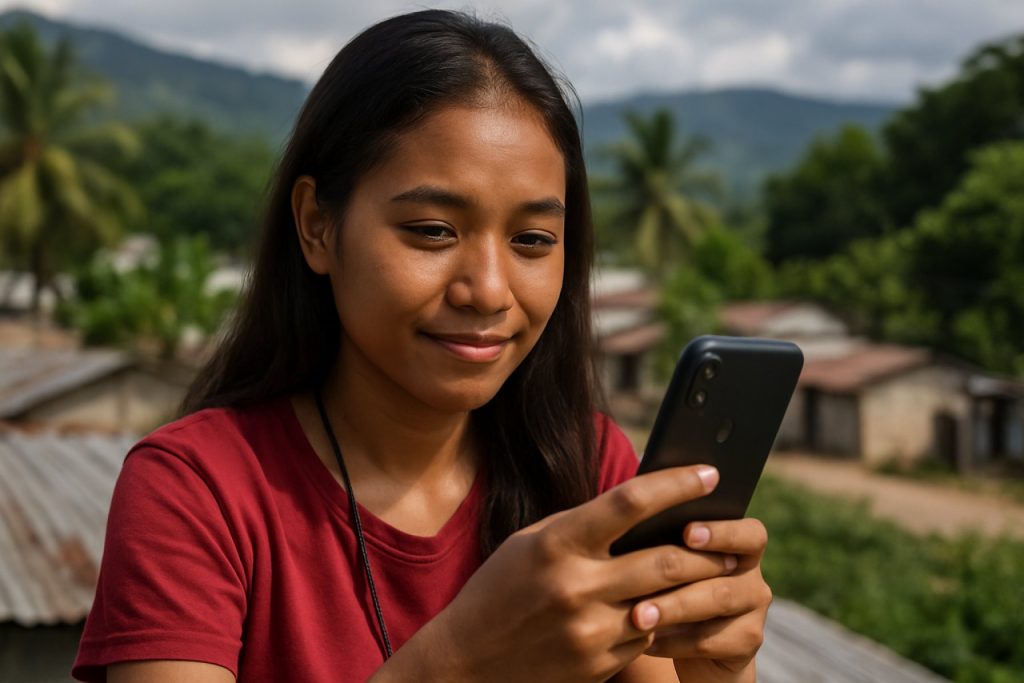
Transforming Timor-Leste: Unleashing the Power of Internet Expansion and Digital Inclusion
- Current State of Internet Access and Usage
- Emerging Technologies Shaping Connectivity
- Key Players and Market Dynamics
- Projected Expansion and User Adoption
- Connectivity Disparities Across Regions
- Anticipated Developments in Digital Infrastructure
- Barriers to Progress and Pathways for Advancement
- Sources & References
“Timor-Leste (East Timor) is making strides to overcome a long-standing digital divide.” (source)
Current State of Internet Access and Usage
Timor-Leste, one of Southeast Asia’s youngest nations, has made significant strides in expanding internet access over the past decade. As of early 2024, internet penetration in Timor-Leste reached approximately 38% of the population, up from just 27% in 2020 (DataReportal). This growth is largely attributed to government initiatives, international partnerships, and the increasing affordability of mobile devices.
Historically, Timor-Leste faced substantial challenges in digital connectivity due to its mountainous terrain, limited infrastructure, and high costs of international bandwidth. Until recently, the country relied heavily on satellite connections, resulting in slow speeds and high prices. However, the launch of the South Submarine Cable in 2022, connecting Dili to Darwin, Australia, marked a turning point. This undersea cable has significantly improved bandwidth, reduced latency, and lowered wholesale internet costs (Submarine Networks).
Mobile internet is the primary mode of access for most Timorese. According to the latest figures, there are over 900,000 mobile connections in a country of 1.3 million people, with 3G and 4G services now available in all 13 municipalities (GSMA). The government’s National Broadband Plan aims to achieve 70% internet penetration by 2025, focusing on rural connectivity and digital literacy programs.
Despite these advances, a significant digital divide persists. Urban areas, particularly Dili, enjoy faster and more reliable connections, while rural communities often contend with limited coverage and lower speeds. Affordability remains a concern, with the average monthly cost of a basic broadband package representing over 5% of the average income (Alliance for Affordable Internet).
Looking ahead to 2025, Timor-Leste’s internet evolution is poised to accelerate. Ongoing investments in infrastructure, such as the planned expansion of fiber-optic networks and public Wi-Fi initiatives, are expected to further bridge the digital divide. However, sustained progress will depend on continued policy support, private sector engagement, and targeted efforts to ensure that marginalized communities are not left behind in the digital transformation.
Emerging Technologies Shaping Connectivity
Timor-Leste’s journey toward digital inclusion is accelerating as emerging technologies reshape its connectivity landscape in 2025. Historically, the nation has faced significant challenges: as of 2022, only about 33% of the population had internet access, with rural areas particularly underserved (DataReportal). However, recent initiatives and technological advancements are rapidly bridging this digital divide.
- Submarine Cable Projects: The government’s partnership with international stakeholders has culminated in the launch of the South Submarine Cable, connecting Dili to Darwin, Australia. This project, operational since late 2023, has increased bandwidth capacity and reduced latency, making high-speed internet more accessible and affordable (Submarine Networks).
- Mobile Broadband Expansion: Mobile network operators, such as Timor Telecom and Telkomcel, have expanded 4G LTE coverage to over 70% of the population by early 2025. The introduction of affordable data plans and smartphones has further democratized access, especially among youth and in peri-urban areas (GSMA).
- Satellite Internet Solutions: For remote and mountainous regions, satellite-based internet—leveraging low-Earth orbit (LEO) constellations—has become a game-changer. Providers like Starlink have begun pilot programs, offering reliable connectivity where terrestrial infrastructure is impractical (Starlink Coverage Map).
- Digital Literacy and Inclusion Initiatives: The government and NGOs are investing in digital skills training, targeting women, youth, and rural communities. These programs aim to ensure that increased connectivity translates into meaningful digital participation and economic opportunity (UNDP Timor-Leste).
As a result of these efforts, Timor-Leste’s internet penetration is projected to surpass 50% by the end of 2025, narrowing the digital divide and fostering new opportunities in education, healthcare, and commerce. The convergence of submarine cables, mobile broadband, satellite solutions, and digital literacy programs is setting the stage for a more connected and inclusive future.
Key Players and Market Dynamics
Timor-Leste’s internet landscape is undergoing significant transformation as the nation strives to bridge its digital divide by 2025. Historically, Timor-Leste has faced challenges in internet penetration due to limited infrastructure, high costs, and geographic barriers. However, recent initiatives and the entry of new stakeholders are reshaping the market dynamics and accelerating digital inclusion.
-
Key Players:
- Timor Telecom: As the incumbent operator, Timor Telecom remains a dominant force, providing fixed-line, mobile, and internet services. The company has invested in expanding 4G coverage and upgrading backbone infrastructure.
- Telkomcel: A subsidiary of Indonesia’s Telin, Telkomcel has played a pivotal role in mobile broadband expansion, leveraging regional expertise and partnerships to improve service quality and affordability.
- Telemor: Backed by Vietnam’s Viettel Group, Telemor has aggressively expanded its network, focusing on rural connectivity and affordable data packages, which has contributed to increased internet adoption.
-
Market Dynamics:
- Rising Internet Penetration: According to DataReportal, internet penetration in Timor-Leste reached 38.2% in early 2024, up from 33.5% in 2023, reflecting rapid growth driven by mobile broadband.
- Infrastructure Investments: The government, with support from international donors and the World Bank, is investing in fiber-optic networks and exploring undersea cable connections to improve bandwidth and reduce costs (World Bank).
- Regulatory Reforms: The National Communications Authority (ANC) is implementing policies to foster competition, lower entry barriers, and encourage private sector participation, which is expected to further drive down prices and improve service quality.
- Digital Inclusion Initiatives: Programs targeting schools, rural communities, and women are being rolled out to ensure equitable access, with a focus on digital literacy and affordable devices.
As Timor-Leste approaches 2025, the combined efforts of key telecom operators, government initiatives, and international partnerships are set to narrow the digital divide, enabling broader socio-economic development and digital empowerment across the nation.
Projected Expansion and User Adoption
Timor-Leste’s internet landscape is poised for significant transformation in 2025, as the nation intensifies efforts to bridge its persistent digital divide. Historically, Timor-Leste has faced substantial challenges in internet penetration, with only about 38% of the population having access to the internet as of 2023 (DataReportal). However, a combination of government initiatives, international partnerships, and infrastructure investments is expected to accelerate both expansion and user adoption in the coming year.
One of the most pivotal developments is the planned connection to the North-West Cable System, a submarine fiber-optic cable linking Timor-Leste to Australia. This project, supported by the World Bank and the Australian government, is projected to be operational by late 2024 or early 2025 (World Bank). The new cable is anticipated to dramatically increase bandwidth, reduce latency, and lower internet costs, making high-speed connectivity more accessible to both urban and rural populations.
In tandem, the government’s National Broadband Plan aims to raise internet penetration to 70% by 2025, focusing on expanding 4G/LTE coverage and piloting 5G in Dili, the capital (ITU). Mobile internet is expected to be the primary driver of user adoption, as mobile subscriptions already outnumber fixed-line connections by a wide margin. The entry of new mobile operators and increased competition is likely to further drive down prices and improve service quality.
- Education and Digital Literacy: The Ministry of Education, in partnership with UNICEF, is rolling out digital literacy programs in schools, aiming to equip the next generation with essential online skills (UNICEF).
- E-Government Services: The government is digitizing public services, which is expected to incentivize more citizens to get online for accessing healthcare, education, and administrative services.
- Private Sector Growth: Improved connectivity is projected to boost e-commerce, fintech, and remote work opportunities, fostering economic diversification.
By 2025, Timor-Leste’s internet evolution is set to narrow the digital divide, with expanded infrastructure, affordable access, and targeted digital literacy initiatives driving robust user adoption and laying the groundwork for inclusive digital growth.
Connectivity Disparities Across Regions
Timor-Leste, one of Southeast Asia’s youngest nations, has made notable strides in internet connectivity over the past decade, yet significant disparities persist across its regions. As of early 2024, internet penetration in Timor-Leste reached approximately 38% of the population, a marked improvement from just 27% in 2020 (DataReportal). However, this growth is unevenly distributed, with urban centers like Dili enjoying far greater access and speeds compared to rural and remote districts.
The government’s National Broadband Policy, launched in 2022, set ambitious targets to bridge this digital divide by 2025. Key initiatives include expanding 4G LTE coverage, subsidizing internet access for schools and health clinics, and investing in digital literacy programs. The arrival of the South Submarine Cable, expected to be operational by late 2024, is projected to reduce international bandwidth costs by up to 60% and increase average download speeds from 3.5 Mbps to over 10 Mbps in urban areas (World Bank).
Despite these advances, rural communities face persistent challenges. Only 18% of rural households have reliable internet access, compared to 65% in Dili (ITU). Factors such as rugged terrain, limited infrastructure, and high service costs contribute to this gap. Mobile internet remains the primary mode of access, but coverage blackspots and affordability issues hinder widespread adoption.
To address these disparities, the government and international partners are piloting community Wi-Fi hubs and exploring satellite-based solutions for hard-to-reach areas. The World Bank and Asian Development Bank have committed over $50 million in grants and loans to support digital infrastructure and skills training through 2025 (ADB).
Looking ahead, Timor-Leste’s internet evolution hinges on sustained investment, regulatory reforms, and inclusive policies. If current momentum continues, the country is on track to achieve 60% national internet penetration by the end of 2025, narrowing the digital divide and unlocking new opportunities for education, healthcare, and economic growth.
Anticipated Developments in Digital Infrastructure
Timor-Leste’s digital landscape is poised for significant transformation in 2025, as the nation intensifies efforts to bridge its persistent digital divide. Historically, Timor-Leste has faced substantial challenges in internet connectivity, with only about 33% of the population having access to the internet as of 2022 (World Bank). However, a series of anticipated developments in digital infrastructure signal a turning point for the country’s connectivity and digital inclusion.
- Submarine Cable Projects: The government has prioritized the deployment of submarine fiber optic cables to connect Timor-Leste with regional internet hubs. The South Submarine Cable project, expected to be operational by late 2024 or early 2025, will link Dili to Darwin, Australia, dramatically increasing bandwidth and reducing latency. This is projected to lower internet costs and improve reliability for both urban and rural users.
- Mobile Network Expansion: Mobile internet remains the primary mode of access for most Timorese. Operators like Timor Telecom and Telkomcel are investing in 4G LTE expansion, with plans to cover over 80% of the population by the end of 2025 (Mobile World Live). This will be crucial for reaching remote communities where fixed-line infrastructure is not feasible.
- Government Digital Initiatives: The National Broadband Plan, launched in 2023, outlines targets for universal internet access and digital literacy by 2030. In 2025, the government is expected to roll out community Wi-Fi hotspots and e-government services, aiming to make public services more accessible and efficient (ITU).
- International Partnerships: Collaboration with international organizations and neighboring countries is accelerating infrastructure development. The World Bank and Asian Development Bank have committed funding and technical support for digital projects, ensuring that Timor-Leste can leverage global expertise and best practices (ADB).
These anticipated developments are set to narrow the digital divide in Timor-Leste, fostering economic growth, educational opportunities, and social inclusion. By 2025, the nation is expected to make significant strides toward a more connected and digitally empowered society.
Barriers to Progress and Pathways for Advancement
Timor-Leste’s journey toward digital transformation is marked by both significant barriers and emerging opportunities. As of early 2024, internet penetration in Timor-Leste remains among the lowest in Southeast Asia, with only about 38% of the population having access to the internet (DataReportal). This digital divide is shaped by a combination of infrastructural, economic, and educational challenges, but recent policy initiatives and international partnerships are paving new pathways for advancement.
- Infrastructure Limitations: The country’s rugged terrain and dispersed rural population make the deployment of broadband infrastructure costly and logistically complex. As of 2023, fixed broadband subscriptions stood at just 0.2 per 100 inhabitants, and mobile broadband, while more widespread, still faces coverage gaps in remote areas (ITU Statistics).
- Affordability and Economic Barriers: The high cost of internet services relative to average incomes remains a major obstacle. According to the Alliance for Affordable Internet, the average cost of 1GB of mobile data in Timor-Leste is approximately 5% of monthly income, well above the UN’s 2% affordability target (A4AI).
- Digital Literacy: Limited digital skills and low levels of ICT education hinder effective internet use, particularly among women and rural communities. The government, in partnership with organizations like UNICEF, has begun rolling out digital literacy programs in schools, but coverage remains limited (UNICEF Timor-Leste).
Despite these barriers, several pathways for advancement are emerging:
- International Connectivity: The planned installation of a submarine fiber-optic cable, expected to be operational by 2025, promises to dramatically increase bandwidth and reduce costs (World Bank).
- Policy Reforms: The government’s National ICT Policy 2021–2030 prioritizes universal access, digital skills development, and regulatory reforms to foster competition and investment (Ministry of Transport and Communications).
- Public-Private Partnerships: Collaborations with telecom operators and international donors are expanding mobile coverage and piloting community internet centers in underserved areas.
As Timor-Leste approaches 2025, bridging the digital divide will require sustained investment, inclusive policy implementation, and continued international cooperation to ensure that all citizens can participate in the digital economy.
Sources & References
- Timor-Leste’s Internet Evolution: Bridging the Digital Divide in 2025
- Submarine Networks
- A4AI
- Starlink Coverage Map
- Timor Telecom
- Telemor
- World Bank
- ITU Statistics
- ADB
- World Bank
- South Submarine Cable project
- Mobile World Live
